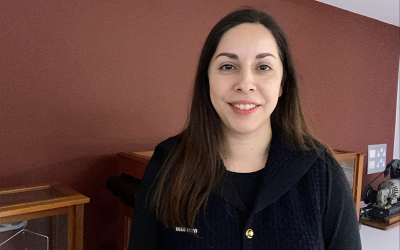Dr Yalda Jamshidi works with the Neurogenetics Lab on rare diseases, and is a Reader in Genomic Medicine (St George’s University of London) and Director of Precision Medicine (Novo Nordisk).

What attracted you to the area of rare diseases and why is it important?
Individuals with rare diseases often struggle to receive an accurate diagnosis and appropriate treatment due to the lack of awareness and understanding of their condition. As a geneticist I became interested in studying rare diseases because they provide unique opportunities to understand the genetic basis of disease. This information can contribute to scientific knowledge and be used to develop new treatments for rare diseases and for more common diseases that share similar genetic mechanisms.
Can you give us some examples of rare diseases and explain some of the challenges in treating them?
Rare neuromuscular disorders are a group of conditions that affect the muscles and the nerves that control muscle movement. They can be caused by rare genetic variants. Many rare muscle disorders are difficult to diagnose, which can delay treatment and lead to unnecessary testing and procedures. Also, there are limited treatment options, and some have no approved treatments. This can leave patients and their families feeling frustrated and helpless.
Another group of rare diseases I am interested in are the cardiomyopathies. Hypertrophic cardiomyopathy is a genetic disease that causes the heart muscle to become abnormally thick, making it harder for the heart to pump blood effectively. The progression and severity of the disease can vary greatly from person to person, but hypertrophic cardiomyopathy is one of the leading causes of sudden cardiac death in young people and athletes.
Cardiomyopathy is a complex disease that can be caused by many different genetic and environmental factors, and we are still working to identify all the genes that contribute to the development of the disease. This is essential for determining the most appropriate treatment plan.
What made you choose to collaborate with the UCL Queen Square Institute of Neurology Neurogenetics Lab?
Rare diseases affect a small number of people, making it difficult to access sufficient data and resources to study the disease comprehensively. By collaborating with the UCL Queen Square Institute of Neurology Neurogenetics Lab we have been able to pool resources and knowledge to enhance research and understanding of the disease. Importantly the lab have the technical expertise in the latest genetic techniques as well as a deep understanding of the clinical pathology of many of the diseases we’re interested in. They are also open to new ideas which is particularly important when collaborating on a rare disease where there may be limited knowledge or understanding of the disease.
Can you tell us about the aims of the research you are collaborating on?
We are studying rare disease patients from the Middle East. In these regions there is a higher incidence of rare genetic diseases and greater genetic diversity of the population resulting from factors such as ancient migration patterns and cultural practices. This diversity offers a unique opportunity to identify novel disease-causing genes and provide important insights into the biology of these diseases. This knowledge can help with the diagnosis and treatment of rare diseases in patients of all ethnicities.
 Close
Close

